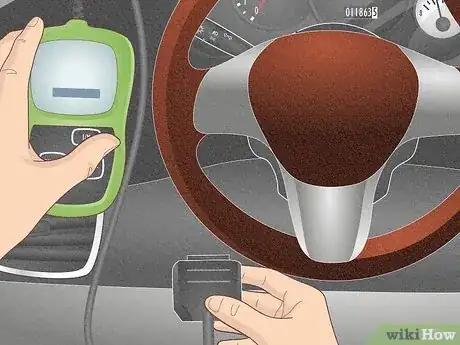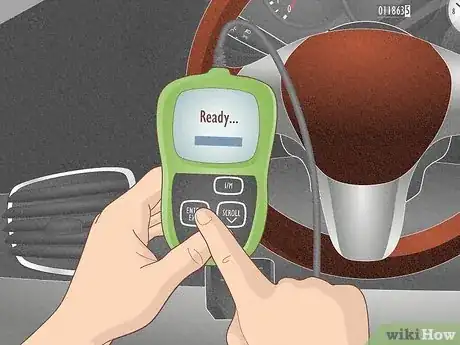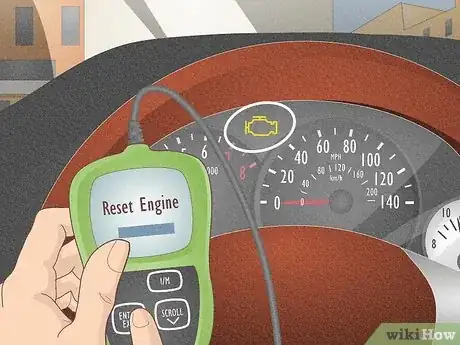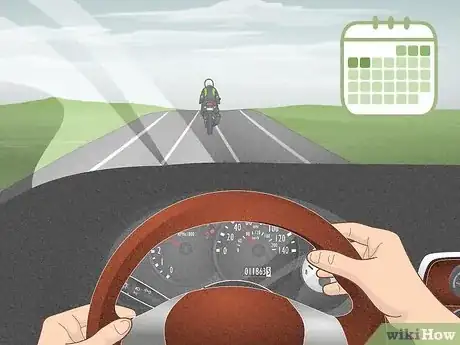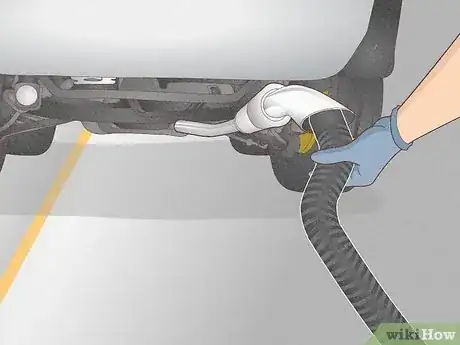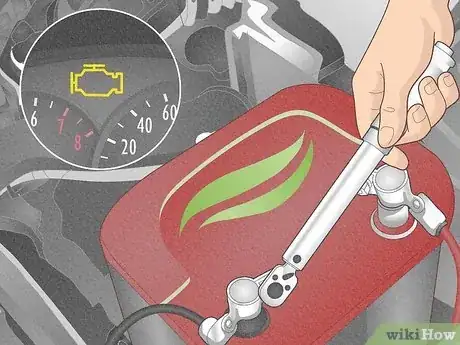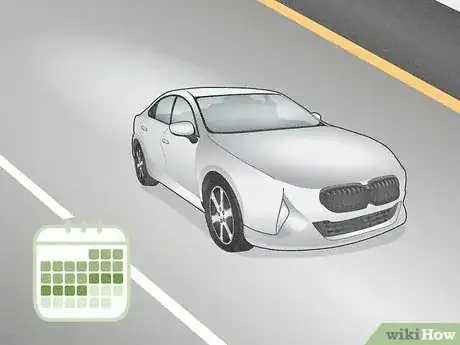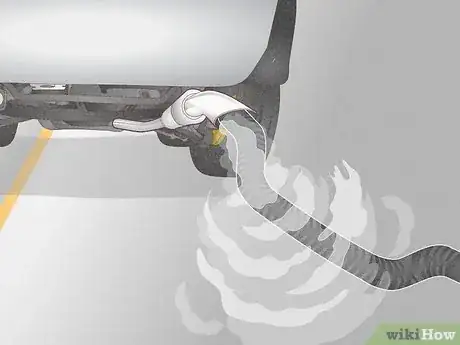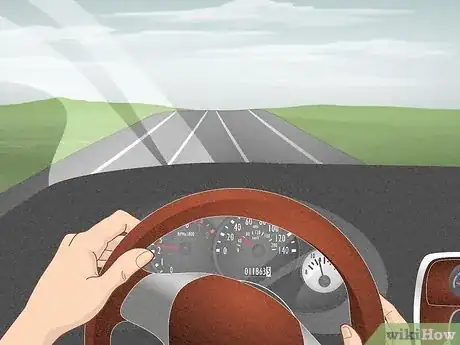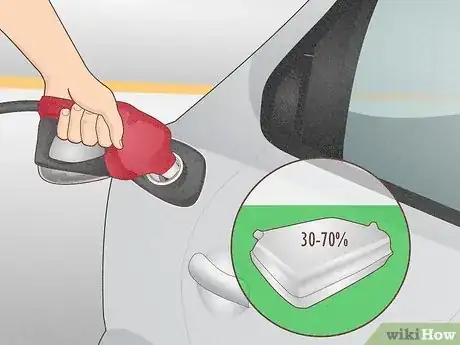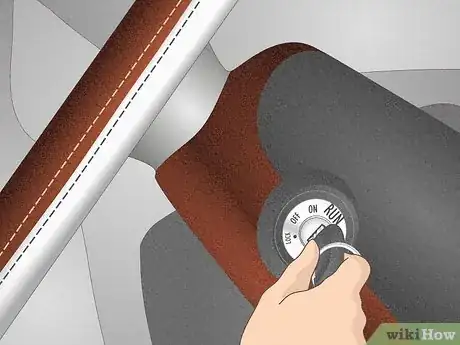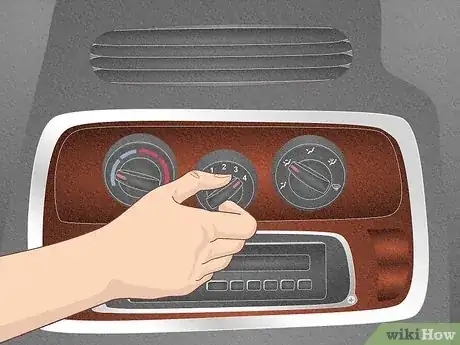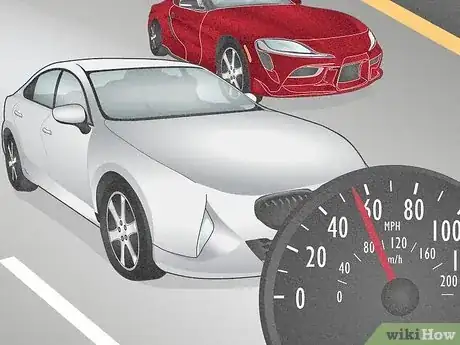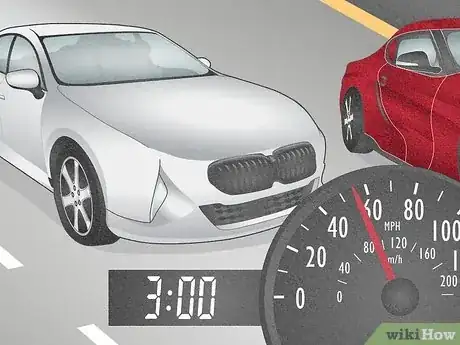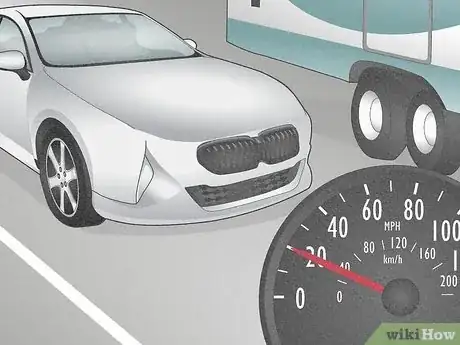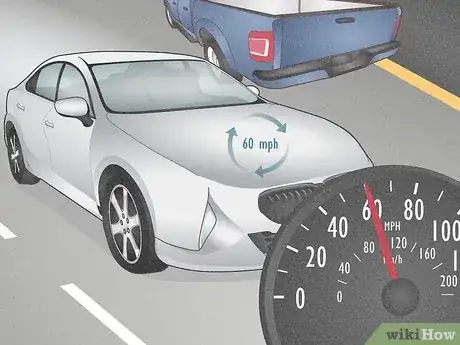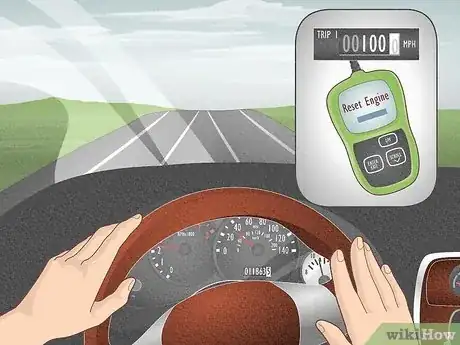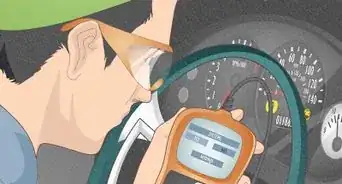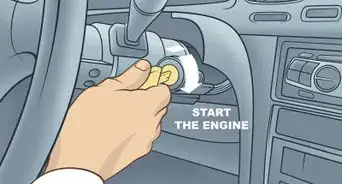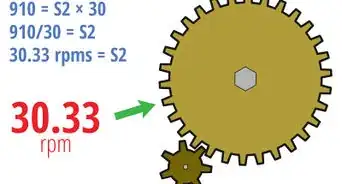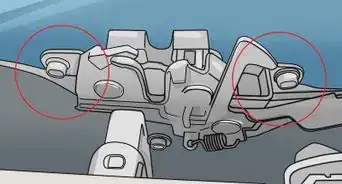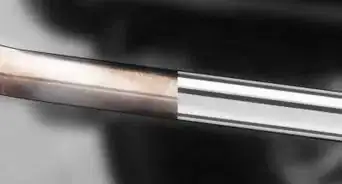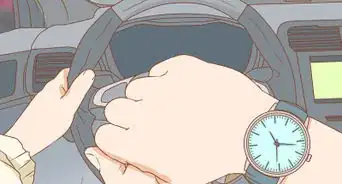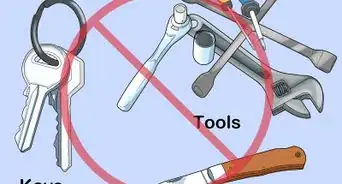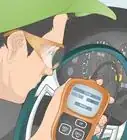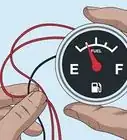This article was co-authored by Ed Beery and by wikiHow staff writer, Eric McClure. Ed Beery is an Automotive Specialist and the Owner of InTechgrity Automotive Excellence based in Denver, Colorado. With more than eight years of experience, he specializes in providing maintenance and repair services for both individuals and companies. Ed and the InTechgrity Automotive Excellence Team are approved by the American Automobile Association (AAA) for repairs and are Automotive Service Excellence (ASE) certified.
This article has been viewed 1,751 times.
So, your vehicle failed an emissions test. You’ve made the necessary repairs and followed your mechanic’s guidance on running a full drive cycle, which will reset your vehicle’s error codes. But even if you’ve successfully repaired the vehicle, the emissions test can still come back as a fail if that drive cycle wasn’t completed correctly. So how do you know if the drive cycle worked? In this article, we’ll show you how to check using an OBD-II scanner, what to do if you don't have a scanner, and walk you through how to complete a drive cycle in case you need to do another one.
Things You Should Know
- Plug an OBD-II scanner into your OBD port and reset the check engine light. If no check engine codes pop up the next time you drive your vehicle, you’re good to go.
- If you don’t have an OBD-II scanner, turn the vehicle off, remove the negative battery terminal, wait 15 minutes, reconnect it, and drive your car as normal.
- Run a fresh drive cycle if you still can’t get the check engine light to go off. Let the car rest for at least 8 hours before you start.
- Perform a comprehensive drive cycle by letting the vehicle idle, accelerating up to highway speeds, letting the engine coast, and driving 100 miles (160 km).
Steps
Confirming the Cycle with an OBD-II Scanner
-
1Plug an OBD-II scanner into the port on the dashboard. Refer to your vehicle’s manual to determine where the OBD-II (aka OBD-2) port is located. Typically, there’s a 16-pin port located under a panel on your dashboard. It’s usually just below your steering wheel, but it may be located in the glovebox.
- You have to do this after completing your drive cycle. If you failed an emissions test and made the required repair, the OBD-II scanner will still read errors if you haven’t completed the drive cycle.
- The drive cycle should clear the error codes and reset your vehicle’s computer. Checking with an OBD-II scanner will confirm whether the codes are gone or not.
- Many auto parts stores will plug an OBD-II scanner into the port to check your vehicle for free if you ask nicely.
- You can always buy a cheap OBD-2 scanner for $20-30. This is a great investment if you drive an older car!
-
2Rest assured you’ll pass if all the systems are “ready” or green. Turn the power on the OBD-II scanner and wait for it to boot up. If the reading doesn’t appear right away, hit the “scan” or “run” button. The scanner will automatically read your vehicle’s computer systems. If everything says “ready” or lights up green, you’re good to go![1]
- OBD-II scanners aren’t all identical, so refer to your instruction manual if you can’t get the scanner to register.
Advertisement -
3Reset the check engine light to see if that fixes things. If the OBD-II scanner shows error codes but you already made the repair, you probably just need to reset the computer in your vehicle. On the OBD-II scanner, find the menu option or button that says “reset” or “reset engine.” Select that button and check the codes again.[2]
- If the codes still pop up on the OBD-II scanner, your vehicle probably just needs to run for a while.
-
4Drive the vehicle for a few days then try again. When you reset the check engine light with the OBD-II, you’re basically clearing your computer’s memory. But that doesn’t make the error codes go away—your car still needs to run for a new reading to take place. Drive around for a few days and use your car the same way you normally would.[3]
- If the check engine light comes back on, there’s still something wrong with your vehicle. Take it back to the mechanic.
-
5Take your emissions test again after the scanner reads clear. After a few days of driving, plug the OBD-II back into the port and run another scan. If the error codes disappear and everything is green, you’ve confirmed that the drive cycle is complete and your car will pass the emissions test.[4]
- If you still have error codes (which would be very odd if the check engine light isn’t on), take your vehicle to a mechanic.
Ensuring the Cycle Worked without a Scanner
-
1Reset your check engine light by disconnecting the battery. With your vehicle off, pop the hood and remove the negative battery terminal with a wrench. Press the horn for 30 seconds to discharge any remaining electrical charge. Wait 15 minutes, reconnect the battery terminal, and turn your vehicle on. If the check engine light is off, you successfully reset the computer.[5]
- In addition to pressing the horn, turn on the vehicle’s cabin lights and wait for them to go out all the way. Then, wait another 10-15 minutes to confirm the battery is fully discharged.
- In most vehicles, this will hard reset your car’s computers and turn off all warning lights.
- If your warning light comes back on right away, something is still wrong with your vehicle and your repair didn’t solve the problem.
-
2Drive your vehicle for 2-3 weeks or perform a drive cycle. Your vehicle may pass an emissions test after you reset the battery, but it’s best to drive for a while or run a second drive cycle just to make sure no warning lights come back on. This should feed your vehicle’s computer systems enough time and information to identify if there are any other issues.[6]
- If your check engine light or any other warning lights pop on, take your vehicle to a mechanic.
-
3Get your emissions test completed again. If resetting your battery and using your vehicle don’t cause any additional lights to come on, your drive cycle was a success and you’re ready for an emissions test redo. Your vehicle should pass the exam.[7]
- If your vehicle still doesn’t pass, ask the emissions inspector for an explanation of why. Something must be seriously off with your vehicle’s computer systems.
Drive Cycle Procedure
-
1Plan on running the drive cycle when the roads are empty. You’re going to perform a series of maneuvers that can be fairly difficult to pull off if the roads are crammed. In fact, you could even pose a safety hazard if you aren’t diligent. Set some time aside late at night or early in the morning when nearly nobody will be on the road.
- Alternatively, you might take your car out to a very rural area where there isn’t going to be much traffic.
- Important Note: Every car manufacturer has its own variation on the drive cycle process. We’re covering the most thorough version, so this should work for you, but refer to your vehicle manual for specific instructions.
-
2Get the fuel tank between 30-70% full. If you’re close to empty, fill up your tank a bit. If you’ve got a full tank, drive around for a day or two before you run the drive cycle. This will give your gas tank sensor enough to work with so that it can cycle all the way through and test its reading.[8]
- There are a bunch of sensors and monitors in your vehicle. The purpose of a drive cycle is to test all of these individual sensors and monitors to give your vehicle time to clear any of the old error codes.
-
3Perform a cold start after the car has settled. Let the vehicle stay off for at least 8 hours. Then, when you’re ready to run your drive cycle, insert the key and turn the ignition. Don’t leave the key in the auxiliary position for too long. This will test the oxygen sensor.[9]
- As a note, you won’t be able to run a clean drive cycle if the vehicle is hotter than 122 °F (50 °C). If it has been sitting on a sunny street on a hot day, this may not work.
-
4Let the engine idle and turn the AC on. Keep the car in park and wait about 3 minutes. Turn on the AC (or heat) and run the rear defroster. Turn the radio on, too. Sit there in park and just wait. Running the air, defroster, and radio will put enough pressure on the electrical system to trip any faults.[10]
- This will test the vehicle’s O2 heater, passive air, misfire, and fuel trim sensors.
-
5Get on the highway and accelerate to 55 miles per hour (89 km/h). Take your vehicle to the interstate or nearest highway and accelerate. Keep the AC, defroster, and radio on while you’re doing this.[11]
- Your vehicle starts running all kinds of unique diagnostics when you get up to highway speeds. This includes the misfire, fuel trim, and purge flow diagnostics.
-
6Maintain 55 miles per hour (89 km/h) for at least 3 minutes. Once you get up to speed, keep your foot on the throttle or put the cruise control on. Keep your speed the same for a minimum of 3 minutes. If someone gets in your way or you have to slow down, don’t worry. Just start over with the 55 mph (89 km/h) exam.[12]
- This is enough time to give your EGR (exhaust gas recirculation), purge, and fuel line sensors room to run.
-
7Let the vehicle coast down to 20 miles per hour (32 km/h). This is a tricky one, so don’t do this when there’s a bunch of people behind you. With your vehicle at 55 miles per hour (89 km/h), take your foot off of the throttle. Then, let your vehicle slow down naturally until you hit 20 miles per hour (32 km/h).[13]
- This should cover everything your engine needs to run its final diagnostic tests.
-
8Repeat this process at 60 miles per hour (97 km/h) a few more times. Just to really cover your bases, accelerate up to 60 miles per hour (97 km/h), hold it, and then coast back down to 20 miles per hour (32 km/h). Do this a handful of times to really ensure your engine has time to cycle repeatedly.[14]
-
9Drive a total of 100 miles (160 km) before checking the cycle again. Back in the day, mechanics would always just tell you do drive 100 miles (160 km) to run a drive cycle on the assumption that you’d eventually test every sensor. Just to be on the safe side, put the miles on the odometer before taking your vehicle in for emissions testing.[15]
- If the check engine light comes on at any point in your journey, it’s a sign that any repairs performed did not solve the underlying problem and your vehicle won’t pass the emissions test.
- If no lights come on, congrats! You’re going to pass your emissions test.
- If you still want to confirm the drive cycle is complete, use your OBD-2 scanner. If you plug it in and your sensors are all green or say “ready,” you’ll pass.
References
- ↑ https://static1.squarespace.com/static/59970b344c0dbfc24e10d9a5/t/59c9637f32601e31bf2c3f68/1506370436958/MASS-Module_4-2012_Update.pdf
- ↑ https://www.dmv.de.gov/VehicleServices/faqs/index.shtml?dc=ve_faqs_obdi/
- ↑ https://deq.nc.gov/about/divisions/air-quality/motor-vehicles-air-quality/inspection-maintenance-program/emissions-inspection-results-information
- ↑ https://deq.nc.gov/about/divisions/air-quality/motor-vehicles-air-quality/inspection-maintenance-program/emissions-inspection-results-information
- ↑ https://mechanicbase.com/engine/how-to-reset-check-engine-light/
- ↑ https://deq.nc.gov/about/divisions/air-quality/motor-vehicles-air-quality/inspection-maintenance-program/emissions-inspection-results-information
- ↑ https://deq.nc.gov/about/divisions/air-quality/motor-vehicles-air-quality/inspection-maintenance-program/emissions-inspection-results-information
- ↑ https://nj.gov/dep/stopthesoot/etep/mod56.pdf
- ↑ https://nj.gov/dep/stopthesoot/etep/mod56.pdf
- ↑ https://nj.gov/dep/stopthesoot/etep/mod56.pdf
- ↑ https://nj.gov/dep/stopthesoot/etep/mod56.pdf
- ↑ https://nj.gov/dep/stopthesoot/etep/mod56.pdf
- ↑ https://nj.gov/dep/stopthesoot/etep/mod56.pdf
- ↑ https://nj.gov/dep/stopthesoot/etep/mod56.pdf
- ↑ https://www.smogtips.com/smog-question/3669/How-to-Complete-a-2004-PT-Cruiser-OBD-II-Drive-Cycle
